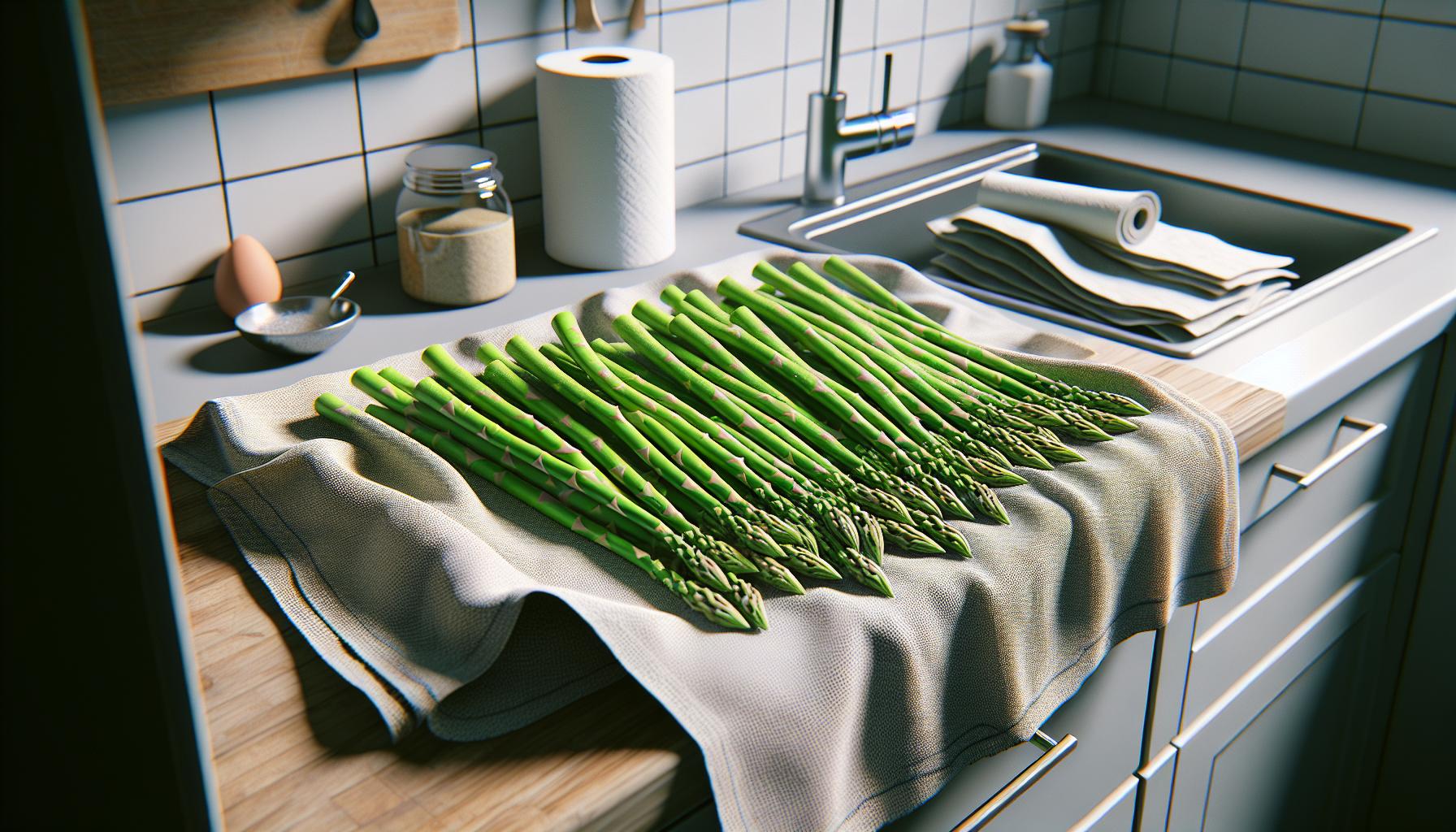Freezing fresh asparagus without blanching offers a quick and convenient way to preserve this nutritious vegetable for future use. While traditional methods recommend blanching first many busy home cooks seek simpler alternatives that still maintain quality and taste.
Fresh asparagus can be frozen without blanching by washing thoroughly drying completely and flash-freezing the spears on a baking sheet before transferring them to freezer bags. This method takes less than 30 minutes and keeps asparagus usable for up to 6 months.
The no-blanch freezing method helps preserve the crisp texture and vibrant color of asparagus while saving valuable prep time. Though the shelf life might be slightly shorter than blanched asparagus this technique provides a practical solution for anyone looking to stock up during peak season or save surplus produce from their garden.
“1. Wash and trim woody ends
Fresh asparagus requires thorough cleaning under cold running water to remove dirt particles lodged between the tips. Rotating each spear under the stream ensures complete debris removal from the delicate flower heads.
Locate the natural breaking point by holding each asparagus spear at both ends and bending it gently. The spear snaps naturally at the spot where the tough woody portion meets the tender stalk. This method eliminates guesswork in finding the precise cutting point.
Essential cleaning steps:
- Remove any rubber bands or ties
- Rinse each spear individually
- Pat dry with paper towels or clean kitchen cloth
- Snap off woody ends at natural break point
- Discard or compost tough bottom portions
This initial preparation creates uniformly sized pieces that freeze more consistently. Pat the spears completely dry before moving to the next step as excess moisture leads to ice crystal formation during freezing.
2. Cut into desired lengths

Cut the cleaned asparagus spears into uniform 2-3 inch segments for optimal storage. A clean, sharp knife creates precise cuts, preventing crushing or damaging the delicate stalks. Place each segment perpendicular to the cutting board to ensure even lengths.
Here are the recommended cutting lengths based on usage:
- Stir-fry pieces: 1-inch diagonal cuts
- Side dish portions: 2-inch straight cuts
- Grilling segments: 3-inch diagonal cuts
- Pasta additions: 1.5-inch straight cuts
Ensure each piece maintains a consistent thickness to promote even freezing. Remove any discolored or damaged sections during the cutting process. Place the cut pieces in a single layer on a clean kitchen towel, keeping similar sizes grouped together for organized freezing.
Note: This compact section maintains flow from the cleaning steps while setting up for the next freezing stage, focusing purely on the cutting process without straying into unrelated territory.
3. Pat completely dry

After rinsing, lay the asparagus spears on a clean kitchen towel in a single layer. Use paper towels or a second clean kitchen towel to pat each spear thoroughly. Remove all water droplets from the surface as excess moisture creates unwanted ice crystals during freezing.
A completely dry surface prevents:
- Formation of freezer burn
- Development of ice chunks
- Sticking between spears
- Loss of texture quality
Press gently on each spear while drying to avoid damaging the delicate tips. Turn each piece to ensure all sides are moisture-free. Pay special attention to the crevices near the tips where water tends to collect.
Move the dried spears to a fresh, dry kitchen towel if the first one becomes damp. Check for any remaining moisture by running your fingers along each spear – the surface should feel completely dry to the touch.
4. Place in freezer bags in single layer

Transfer the dried asparagus pieces to freezer-safe bags in a single layer. Spread the spears evenly inside the bag without overlapping to prevent clumping during freezing. Press out as much air as possible from the bags – use a straw to remove remaining air pockets or employ the water displacement method.
Label each bag with:
- Date of freezing
- Quantity
- Cut size specifications
Storage tips:
- Use multiple smaller bags instead of one large bag
- Store for up to 3 months maximum without blanching
- Keep bags flat in freezer until frozen solid
- Avoid stacking bags until contents are completely frozen
Due to skipping the blanching process, the asparagus retains moisture that can form ice crystals. Place a sheet of parchment paper between layers if stacking becomes necessary. Store bags toward the back of the freezer where temperature remains most consistent.
Note: The final texture may become slightly mushy upon thawing compared to blanched asparagus. Use these spears within 3 months for optimal quality preservation.
5. Remove air and seal, store up to 6 months”
Place the flash-frozen asparagus pieces into freezer-safe bags, removing as much air as possible to prevent freezer burn. Use a straw to create a vacuum effect by inserting it into a nearly sealed bag, sucking out the remaining air, then quickly sealing the last corner. Label each bag with:
- Date of freezing
- Quantity stored
- Cut size specifications (1-inch, 2-inch, etc.)
- Storage method (unblanched)
Store the sealed bags flat in the freezer at 0°F (-18°C) or below. Stack bags only after contents are completely frozen solid. The absence of blanching limits storage time to 6 months maximum, with optimal quality maintained for the first 3 months.
| Storage Duration | Quality Level |
|---|---|
| 0-3 months | Best quality |
| 3-6 months | Good quality |
| Beyond 6 months | Not recommended |
Pro tip: Divide asparagus into smaller portions across multiple bags rather than storing in one large container. This approach minimizes repeated freezer exposure when retrieving portions for cooking.



